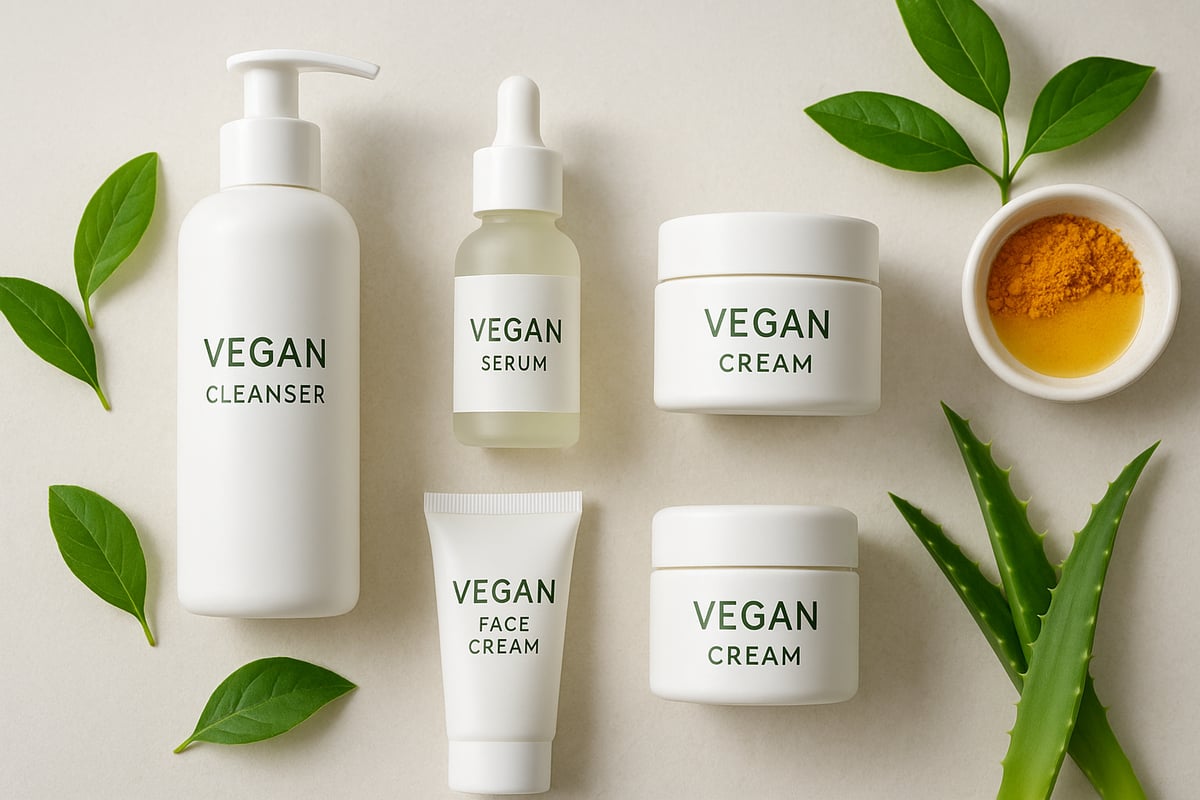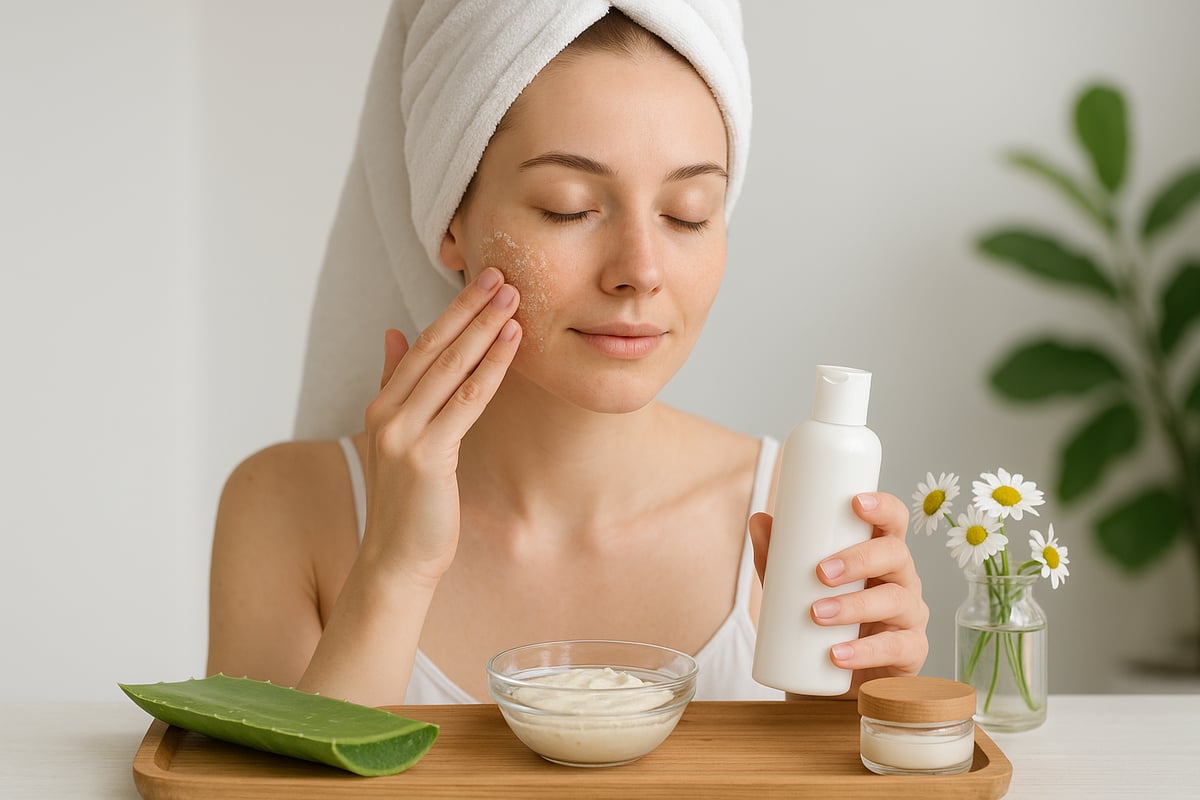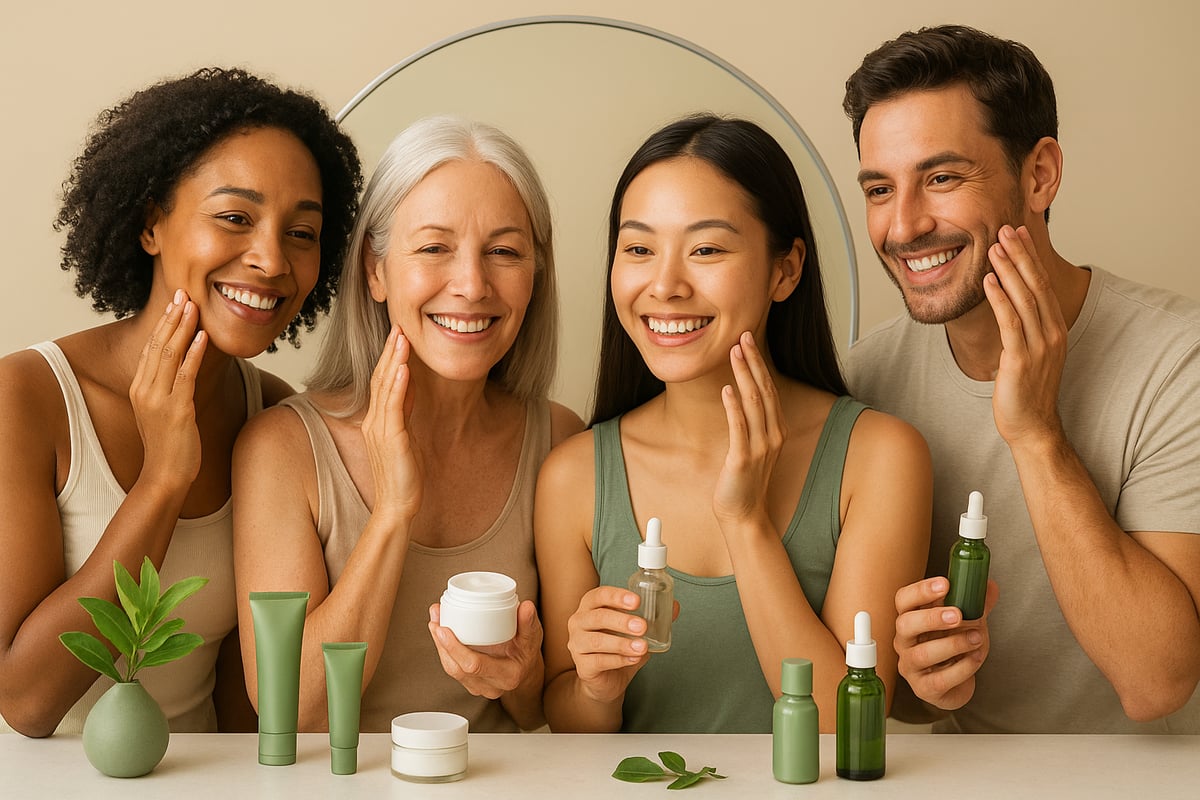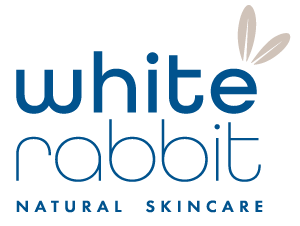Curious about the next big thing in skincare? The vegan facial is set to transform how we care for our skin in 2025, blending ethics and results like never before.
This guide will help you understand what a vegan facial truly is, so you can build a cruelty-free routine that gives your skin a healthy, radiant glow. We’ll break down the science, step-by-step routines, must-know ingredients, and expert tips—making vegan skincare simple and accessible for everyone.
Ready to join the rise of vegan beauty? Let’s dive in and create a routine you’ll love, packed with kindness, knowledge, and real results.
Understanding Vegan Skincare: Principles & Benefits
Curious about what makes a vegan facial different from other skincare trends? Let’s unravel the meaning behind vegan skincare and discover why it’s becoming a cornerstone for conscious beauty lovers.

What Does Vegan Skincare Really Mean?
Vegan skincare means every product is made without animal-derived ingredients. This sets it apart from "cruelty-free" products, which simply aren't tested on animals, and from "natural" skincare, which might still include animal ingredients like honey or beeswax.
Here’s a quick comparison to clear up the differences:
| Skincare Type | Animal Ingredients | Animal Testing | Plant-Based Only |
|---|---|---|---|
| Vegan | No | No | Yes |
| Cruelty-Free | Possible | No | No |
| Natural | Possible | Possible | No |
Choosing a vegan facial means you’re guaranteed a plant-based, animal-friendly experience.
Why Go Vegan? Benefits for Skin, Animals, and Earth
There are many reasons to embrace a vegan facial. Here are some of the top benefits:
- No animal-derived ingredients: Reduces the risk of allergies and suits sensitive skin.
- Eco-friendly: Plant-based formulas are often more sustainable, with less impact on the planet.
- Ethical choice: Supports animal welfare by avoiding animal exploitation.
When you opt for a vegan facial, you’re part of a movement that values compassion and environmental responsibility.
The Science Behind Vegan Skincare
You might wonder, can a vegan facial deliver real results? The answer is yes. Plant-based actives are rich in vitamins, antioxidants, and essential fatty acids that nourish and protect your skin. Ingredients like aloe vera hydrate, squalane from olives locks in moisture, and hyaluronic acid (derived from plants) plumps the skin naturally.
Scientific studies support the effectiveness of these botanicals in soothing irritation, boosting radiance, and supporting the skin barrier. By choosing a vegan facial, you’re giving your skin gentle care without compromise.
Misconceptions and How to Spot True Vegan Skincare
Some believe vegan skincare is less effective or harder to access. In reality, formulas are just as potent as conventional products, and the range is growing fast. Here are a few common myths:
-
Myth: Vegan means expensive.
Truth: Options exist for every budget. -
Myth: Plant-based isn’t strong enough.
Truth: Many botanical actives are clinically proven.
To ensure your vegan facial routine is truly ethical, look for certifications like:
| Certification | What it Means |
|---|---|
| The Vegan Society | No animal ingredients |
| PETA Vegan | No animal ingredients/tests |
| Leaping Bunny | Cruelty-free, but check for vegan status |
Check ingredient lists for hidden animal by-products such as lanolin or carmine, and always look for clear vegan labelling.
The Rise of Vegan Beauty: Market Growth and Trending Ingredients
The vegan facial movement is booming, especially in the UK. Reports predict the global vegan skincare market will keep expanding as more people seek ethical, plant-powered solutions. According to recent vegan skincare market trends and drivers, demand is fuelled by growing awareness of animal welfare and sustainability.
Popular vegan actives include:
- Aloe vera (soothing)
- Hyaluronic acid (hydration)
- Squalane from olives (moisture)
- Turmeric (anti-inflammatory)
With more brands and choices than ever, adopting a vegan facial routine has never been easier—or more rewarding.
Essential Steps of a Vegan Facial Routine
Building a vegan facial routine is a beautiful act of self-care and kindness to both your skin and the planet. Whether you are new to vegan skincare or looking to refine your process, these essential steps will help you create a routine that feels as good as it looks. Each step is designed to nurture your skin with plant-powered ingredients, guiding you towards a radiant, healthy complexion.

Step 1: Cleansing the Vegan Way
Cleansing is the foundation of every effective vegan facial. It gently removes impurities, makeup, and daily build-up, setting the stage for glowing skin. Vegan cleansers come in various forms: creamy for dry skin, gel for oily types, oil-based for deep cleansing, and micellar water for sensitive complexions.
Look for soothing plant ingredients such as coconut oil and chamomile, which nourish without stripping moisture. Always check the label to avoid non-vegan ingredients like beeswax and lanolin.
A double cleanse is ideal for a thorough vegan facial. Start with an oil-based vegan cleanser to dissolve makeup, then follow with a gentle gel or cream cleanser. Explore the Vegan cleansers collection to find the perfect match for your skin type.
Step 2: Exfoliation for Radiance
Exfoliation is the secret to a smooth, luminous complexion in any vegan facial. It removes dead skin cells, helping serums and moisturisers work more effectively. You can choose between physical exfoliants like jojoba beads or chemical ones such as fruit enzymes.
For most skin types, exfoliating once or twice a week is enough. Sensitive skin? Opt for a mild enzyme exfoliant and always patch test first.
Try this easy DIY vegan exfoliating scrub: mix oat flour with a splash of almond milk and a pinch of turmeric. Massage gently in circles, then rinse for instantly softer skin.
Step 3: Toning & Balancing
Toning is a crucial but often overlooked step in a vegan facial routine. Toners help rebalance your skin’s pH, refine pores, and provide a burst of hydration. Vegan-friendly ingredients like rosewater and witch hazel are soothing and gently astringent.
Choose alcohol-free formulas for sensitive or dry skin. Apply toner with a reusable cotton pad or spritz a mist directly onto your face.
Layering a hydrating vegan mist after toner can amplify your glow, prepping your skin for the next steps.
Step 4: Masking for Targeted Results
Masks are the targeted treatment heroes of a vegan facial. Whether you need hydration, detox, or anti-ageing support, there’s a vegan mask for you: clay to purify, gel to soothe, sheet for convenience, or cream for deep nourishment.
Look for plant-powered actives such as spirulina, matcha, or turmeric. Apply your chosen mask for 10-20 minutes, then rinse with lukewarm water.
For an at-home vegan mask routine, try blending avocado with a teaspoon of agave syrup for a hydrating treat. Your skin will thank you.
Step 5: Hydration & Moisturising
Hydration is essential to lock in the benefits of your vegan facial. Vegan moisturisers come in many forms: lightweight gels for oily skin, rich creams for dryness, and nourishing oils for extra care.
Seek out ingredients like shea butter, squalane (from olives), and almond oil. Layer a hydrating serum under your moisturiser for a plump, dewy look.
In the morning, use a lighter vegan cream, while a richer formula at night helps repair and soothe as you sleep.
Step 6: Sun Protection & Finishing Touches
No vegan facial is complete without daily sun protection. Apply a vegan, reef-safe SPF every morning, even on cloudy days. This helps prevent premature ageing and protects your skin’s health.
You can add finishing touches like a few drops of facial oil, a hydrating mist, or a gentle spot treatment. To reapply SPF over makeup, try a vegan sunscreen spray or powder.
In the evening, focus on calming hydration and gentle repair, skipping SPF but sealing in moisture. These finishing steps help your vegan facial routine deliver lasting, glowing results.
Ingredient Spotlight: What to Use & What to Avoid
Choosing the right ingredients is at the heart of a successful vegan facial. With so many products on the market, it's easy to feel lost. Let’s break down which ingredients will truly nourish your skin, which to avoid, and how to spot hidden animal by-products. This way, we can all make informed, compassionate choices for our skincare routines.

Vegan-Friendly Ingredients for Radiant Skin
When building a vegan facial routine, look for plant-powered heroes that deliver real results. Popular choices include aloe vera for its soothing touch, hyaluronic acid sourced from fermentation for deep hydration, and squalane from olives to boost skin’s barrier. Bakuchiol, a plant-based retinol alternative, is fantastic for those seeking youthful glow without irritation.
Other effective vegan ingredients include:
- Shea butter for moisture
- Jojoba oil for balancing
- Green tea extract for antioxidants
These ingredients are gentle, effective, and perfect for any vegan facial, leaving your skin nourished and happy.
Ingredients to Avoid & Hidden By-Products
Not every natural-sounding ingredient is vegan. Common animal-derived substances in skincare include collagen, honey, beeswax, carmine (a red pigment from insects), and lanolin (from sheep’s wool). Watch for hidden animal by-products like stearic acid and glycerin, which can be plant- or animal-derived.
A quick tip: If you see “hydrolysed collagen” or “propolis” on a label, it’s not suitable for a vegan facial. Always check for clear vegan certification to stay on track.
Plant-Based Alternatives & Reading Ingredient Labels
The beauty of vegan facial care is the abundance of plant-based alternatives. Instead of animal collagen, look for products with soy protein or seaweed extracts. Replace lanolin with nourishing plant oils like almond or coconut. Bakuchiol is a standout alternative to retinol, providing similar results with less irritation.
Reading ingredient labels is key. Look for short, easy-to-understand lists and seek out third-party vegan certifications. This simple habit ensures your vegan facial products are truly cruelty-free and effective.
Comparing Product Labels—Vegan vs. Non-Vegan
Let’s compare two moisturiser labels to see the difference:
Vegan Facial Moisturiser:
Aqua, Squalane (Olive), Shea Butter, Aloe Vera, Hyaluronic Acid, Bakuchiol, Tocopherol (Vitamin E).
Non-Vegan Moisturiser:
Aqua, Collagen, Lanolin, Beeswax, Glycerin, Retinyl Palmitate, Fragrance.
Notice the vegan facial product relies solely on plant-based actives, while the non-vegan one includes animal-derived ingredients. Choosing vegan means you’re supporting both your skin and the planet.
Sensitive Skin & Trending Vegan Ingredients
If your skin is sensitive, opt for fragrance-free, hypoallergenic vegan facial options. Ingredients like calendula, oat extract, and chamomile are gentle and soothing. Always patch test new products, and consider Shop by skin type to find the perfect vegan match for your unique needs.
Curious about what’s trending? The most searched vegan ingredients in the UK for 2024 include bakuchiol, niacinamide, and squalane. These actives are not only popular but also proven to deliver visible results.
Choosing the right ingredients empowers us all to create a truly compassionate and effective vegan facial routine, every single day.
Choosing the Right Vegan Skincare for Your Skin Type
Finding your perfect vegan facial routine starts with understanding your unique skin. Whether your skin is oily, dry, sensitive, or a mix, there’s a compassionate, effective approach for you. Let’s explore how to match your vegan facial choices to your skin’s needs, avoid common triggers, and discover the UK’s leading ethical brands.

Identifying Your Skin Type
The first step to a tailored vegan facial is figuring out your skin type. Is your skin oily and shiny by midday, dry and flaky, sensitive to new products, or a bit of everything? Sometimes, your skin type changes with the seasons or hormones, so it’s worth checking in regularly.
Try a simple at-home test: cleanse your face, wait an hour with no products, then observe. Oily skin feels slick, dry skin feels tight, combination skin has both dry and oily areas, and sensitive skin reacts easily.
Matching your vegan facial to your skin type ensures you get the best results. Here’s a quick table to help:
| Skin Type | Vegan Facial Focus | Example Ingredient |
|---|---|---|
| Oily | Lightweight, balancing | Witch hazel |
| Dry | Rich, nourishing | Shea butter |
| Sensitive | Gentle, soothing | Aloe vera |
| Combination | Balancing, hydrating | Squalane (from olives) |
The more you know your skin, the more your vegan facial will work for you.
Product Selection Tips by Skin Type
Choosing the right vegan facial products for your skin type makes all the difference. For oily or acne-prone skin, pick lightweight, non-comedogenic options like gel cleansers and oil-free moisturisers. Dry or mature skin loves rich creams, oils, and humectants such as hyaluronic acid.
If your skin is sensitive, look for fragrance-free formulas with minimal ingredients. Combination skin benefits from layering — use a light moisturiser on the T-zone and a richer cream on drier areas.
Here are some easy vegan product swaps for common concerns:
- Swap thick creams for gel moisturisers if you’re oily.
- Try almond oil instead of coconut oil for sensitive skin.
- Use bakuchiol as a plant-based alternative to retinol for anti-ageing.
A well-chosen vegan facial routine transforms your skin without compromise.
Navigating Allergies and Sensitivities
Even vegan facial products can contain plant allergens, so always patch test new items. Common triggers include essential oils, nuts, and soy-based ingredients. If you’re prone to eczema or rosacea, hypoallergenic vegan facial options are a must.
Check ingredient lists carefully and read reviews to spot potential irritants. When in doubt, seek out products labelled as suitable for sensitive skin.
Let’s say you have eczema: choose a gentle, fragrance-free vegan facial cleanser and moisturiser with oat extract or squalane. If you’re worried about sensitivities, introduce one new product at a time and monitor your skin’s reaction.
Taking these steps helps you build a vegan facial routine that’s both safe and effective for your skin.
UK Brands Leading the Vegan Skincare Movement
The UK is at the forefront of the vegan facial revolution. Trusted brands like White Rabbit Skincare, Evolve Organic Beauty, and UpCircle offer certified vegan products that are both ethical and effective. Many carry recognisable certifications, making it easier to shop with confidence.
Ethical sourcing and sustainability are top priorities for these brands. From affordable to luxury, there’s a vegan facial option for every budget. If you’re keen to explore budget-friendly options, you’ll love this guide to inexpensive vegan skin care brands that make ethical beauty accessible to all.
UK consumers are shaping global trends by demanding transparency, cruelty-free formulas, and eco-conscious packaging. By choosing a vegan facial routine from leading UK brands, you’re not just caring for your skin, you’re supporting a kinder, greener future.
Vegan Facial Treatments: At-Home vs. Professional
Exploring the world of vegan facial treatments is an exciting step towards a kinder, more radiant beauty routine. Whether you’re pampering yourself at home or booking a luxurious spa experience, understanding the differences will help you make the best choices for your skin and values. Let’s dive into both options and discover how to get the most from every vegan facial.
DIY At-Home Vegan Facials
Bringing the vegan facial experience home can be both relaxing and empowering. Start by gathering essentials like a gentle vegan cleanser, soft face cloth, facial steamer, and a jade roller. Choose your favourite plant-based ingredients for masks and scrubs, such as oatmeal, avocado, or aloe vera.
Here’s a simple step-by-step routine:
- Cleanse thoroughly to remove impurities.
- Steam your face for five minutes to open pores.
- Exfoliate gently with a homemade scrub (try blending sugar with coconut oil).
- Apply a hydrating vegan mask, like mashed banana with a touch of almond milk.
- Finish with a vegan moisturiser and soothing facial oil.
For more guidance on integrating vegan products into your routine, visit How to use our products. This friendly approach ensures your vegan facial is both effective and enjoyable.
Professional Vegan Facials: What to Expect
Choosing a professional vegan facial means indulging in expert care while staying true to your ethics. Look for salons or therapists who specialise in vegan treatments and use only certified vegan products. When booking, don’t hesitate to ask about product sourcing and hygiene standards.
A typical professional vegan facial includes cleansing, exfoliation, steaming, masks, massage, and hydration, all tailored to your skin’s needs. Many spas now offer bespoke vegan facials in major UK cities, with some even providing extra touches like aromatherapy or gua sha.
Visiting a vegan spa in London, for example, feels like stepping into an oasis where every detail is cruelty-free and eco-conscious. You’ll leave with glowing skin and peace of mind, knowing your treatment aligns with your values.
Safety, Hygiene, and Aftercare
Proper care is essential for a safe and soothing vegan facial experience. Always start with clean hands and disinfected tools, whether at home or in a salon. After your facial, focus on gentle care to prevent irritation—avoid harsh actives, intense sun, or heavy makeup for at least 24 hours.
A handy aftercare checklist:
- Use a mild vegan cleanser for the next few days.
- Moisturise with a fragrance-free vegan cream.
- Apply SPF daily, as your skin may be more sensitive.
- Watch for signs of irritation and soothe with aloe vera gel if needed.
Remember, patch testing new products before your next vegan facial helps minimise risk and keeps your skin happy.
Cost Comparison & Value
Vegan facial treatments span a range of budgets, from affordable at-home routines to premium spa experiences. At-home facials typically cost only the price of your favourite vegan products, making them accessible for regular self-care. Professional vegan facials in the UK can range from £40 to £120 per session, depending on location, product quality, and therapist expertise.
Here’s a quick comparison:
| Treatment Type | Typical Cost | Frequency | Value for Money |
|---|---|---|---|
| At-Home Vegan Facial | £5-£20 | Weekly/Biweekly | Great for regular maintenance |
| Professional Vegan Facial | £40-£120 | Monthly/Occasional | Best for deep treatments and relaxation |
Investing in a professional vegan facial is perfect for special occasions or a deeper skin boost, while at-home routines offer flexibility and cost savings. Many find a mix of both delivers the best results for glowing, healthy skin.
The Future of Vegan Skincare: Trends & Innovations for 2025
The future of vegan facial routines is brighter than ever, with 2025 poised to bring remarkable innovations to our daily skincare rituals. As science and sustainability unite, we’re seeing the vegan facial become a symbol of both self-care and conscious living. Let’s explore the latest breakthroughs and what they mean for us all.
Scientific Advances in Vegan Facial Skincare
Biotechnology is transforming vegan facial products, bringing sophisticated plant-based ingredients to the mainstream. Brands are now using upcycled botanicals, such as fruit peels and seeds, to create potent actives that nourish and repair the skin. Waterless formulas are also gaining attention, delivering concentrated benefits while lowering environmental impact.
For example, lab-grown squalane from olives and algae-based hyaluronic acid are replacing traditional animal-derived ingredients in many vegan facial lines. This shift not only supports cruelty-free values but also enhances product efficacy and stability.
Sustainability and Eco Innovations
Sustainability is at the heart of the vegan facial movement for 2025. Brands are embracing zero-waste packaging, with refillable bottles and compostable materials quickly becoming the norm. Waterless cleansers and solid serums reduce plastic waste and carbon footprints, making it easier for us to reduce our environmental impact without compromising on luxury.
Upcycled ingredients are also changing the game, turning what was once waste into skincare gold. By using by-products from the food industry, vegan facial products are now more resource-efficient than ever. These innovations empower us to make kinder choices for our skin and the planet.
Personalisation and Inclusivity
Personalisation is another exciting trend in the vegan facial world. AI-powered skin analysis tools are now making it possible to create routines tailored to your unique skin needs. From custom serums to adaptive moisturisers, the vegan facial experience is becoming more bespoke and effective.
Inclusivity is also central to this movement. Brands are formulating vegan facial products for a wider range of skin tones, sensitivities, and concerns, ensuring everyone can find their perfect match. New adaptogens, prebiotics, and probiotic formulas are being developed to support barrier health and balance, no matter your skin type.
Market Growth and Future Breakthroughs
The vegan facial market is booming in the UK and across Europe, with experts predicting continued double-digit growth in the years ahead. According to the UK vegan cosmetics market analysis, demand is soaring as more people seek ethical, high-performance skincare.
Breakthrough ingredients like bakuchiol, a plant-based alternative to retinol, are setting new standards for gentle, effective anti-ageing. Industry leaders highlight the importance of ongoing research and inclusivity, noting that the vegan facial is evolving to meet the needs of a diverse, conscious community. As we look to 2025, we can expect even more innovation, making vegan facial care a true leader in ethical beauty.


